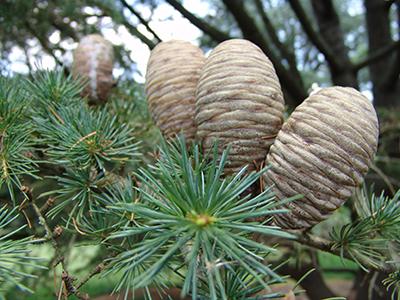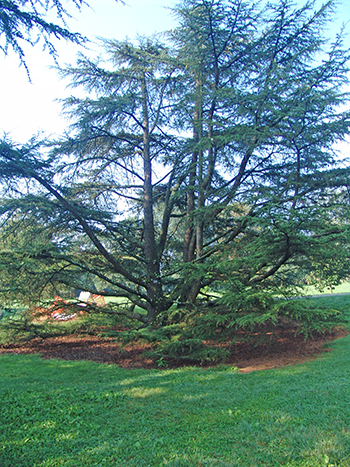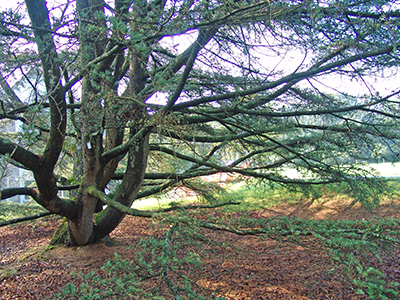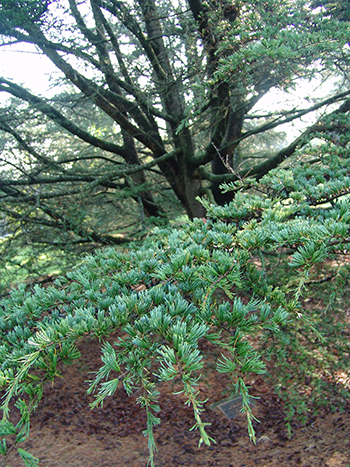
Cedrus libani

As we clean-up from the loss of 13 large trees during summer storms, I want to take a moment to admire the giants we still have. In particular, our mature Cedar of Lebanon, Cedrus libani, located between Old Tarble and Mertz Hall. This specimen has wide “shoulders” adorned with upright cones resembling beehives. It predates the founding of the Arboretum (1929), but we estimate it is over hundred years old. (The Scott Arboretum turned 90 this year.)

One of our mature giants, Cedar of Lebanon. photo credit: R. Robert
Cedar of Lebanon is a great specimen tree for your garden. It ranks as one the best winter hardy cedars and prefers well-drained, acidic loams soil in full sun. Relatively disease free, this evergreen conifer develops a massive trunk with a flattened top and horizontally spreading branches; thus gardeners should give this slow growing tree room to grow.

Horizontally spreading branches are a characteristic of Cedrus libani. photo credit: R. Robert
This majestic tree is also the national emblem of Lebanon and can be found on the Lebanon flag.

This evergreen conifer have lovely short needles. photo credit: R. Robert
Our specimen has been abundantly producing seedlings which will be available for purchase in limited quantities at the 2019 Scott Arboretum Selections: Fall Sale on September 12 to 14. Join us for the Gold Special Friend Preview Party to be sure you get your future majestic specimen.





No Comments